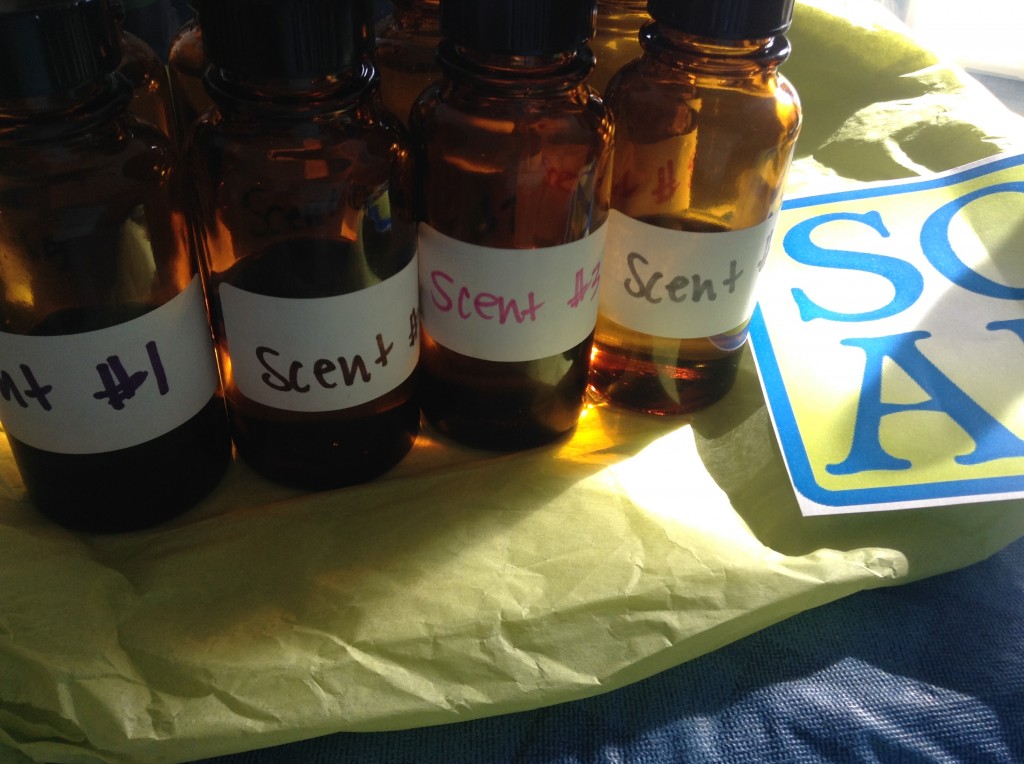 I received my S.O.A.P. Panel test fragrances from Bramble Berry on Thursday. Fragrances often smell different out of the bottle than they do once they’ve gone through saponification, but here are my initial impressions of the eight fragrances:
I received my S.O.A.P. Panel test fragrances from Bramble Berry on Thursday. Fragrances often smell different out of the bottle than they do once they’ve gone through saponification, but here are my initial impressions of the eight fragrances:
- Piney type scent. Very pleasant. A bit floral. I like the way this one smells.
- A sort of apple or pear scent. A little bit of a sour bite. I detect more pear, but there is a definite bite to it. Smells good.
- Floral, very feminine. Clean. A honeysuckle-type note. Maybe jasmine. Smells very nice.
- Sort of masculine. A water/fruit note. Smells clean. Smells good.
- A sort of neem oil note to it. A grass note. Earthy. I don’t like this one out of the bottle.
- Fruity and floral. Summery. Citrus note. I like this one.
- Pretty, feminine, floral. Very springy. Smells good.
- Masculine. Smells sort of like a sexy man. A fruit note.
I handed the last one to my husband Steve and said, “Smell it. I think it smells like a sexy man.”
Steve replied, “Why yes, it does smell like me.”
Dork.
I will be testing each fragrance in a one-pound batch with full water and will take notes on how the fragrance behaves, particularly regarding acceleration, ricing, and discoloration. I will be using a recipe of 45% olive oil, 25% coconut oil, 25% palm oil, and 5% castor oil. I will use the fragrance at the rate of 6%, which I find is usually enough to have a nice, strong scent with a fragrance that sticks well. I will gel the soaps so I can determine whether gelling impacts the fragrances’ sticking power. Lastly, I will keep notes on how well the fragrance sticks after some time has passed.
I’m very excited to try the fragrances out!


